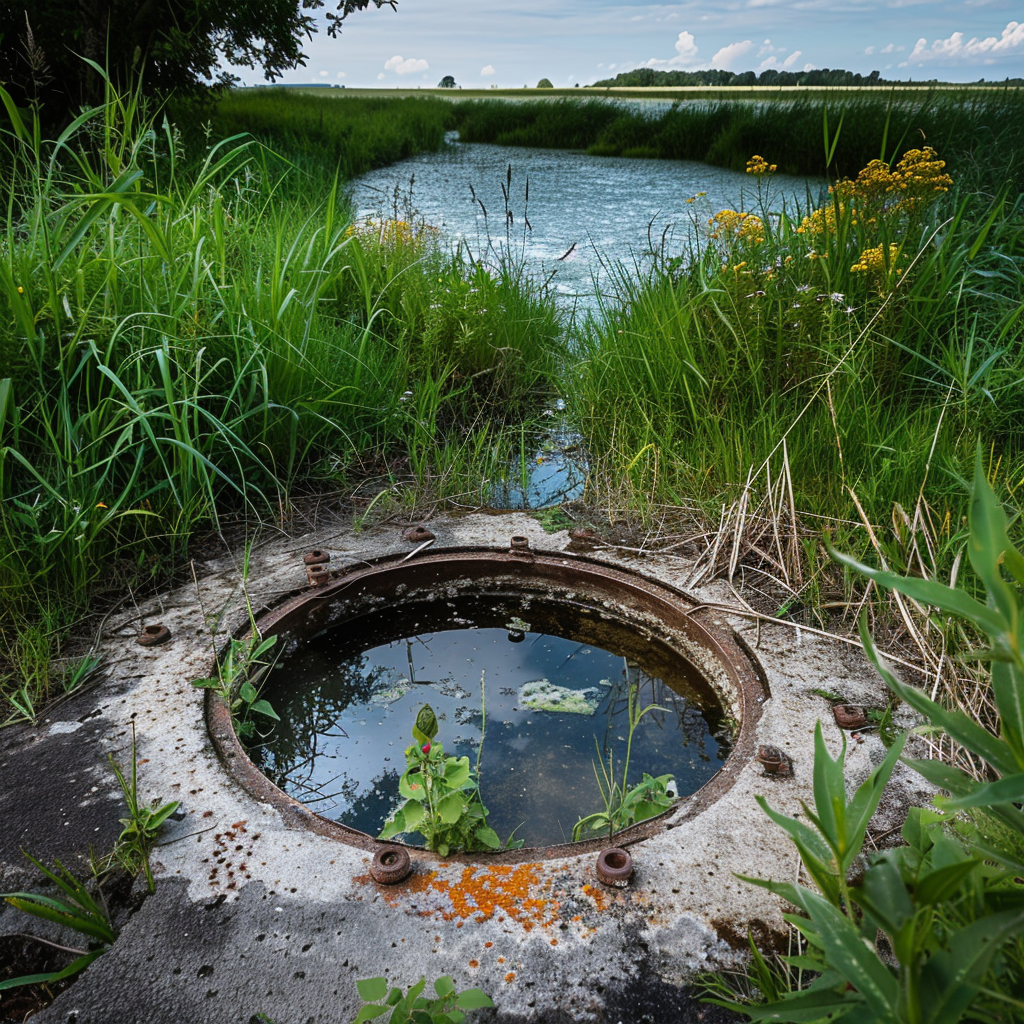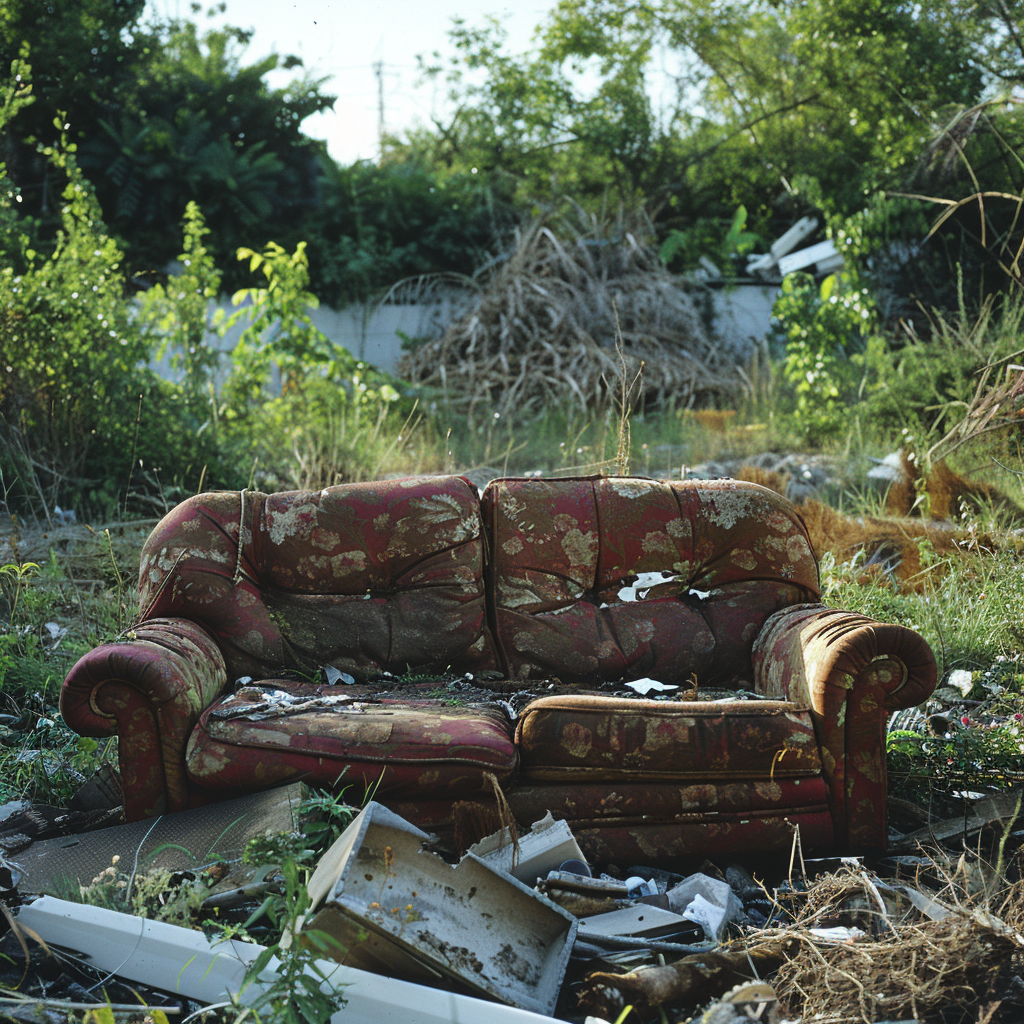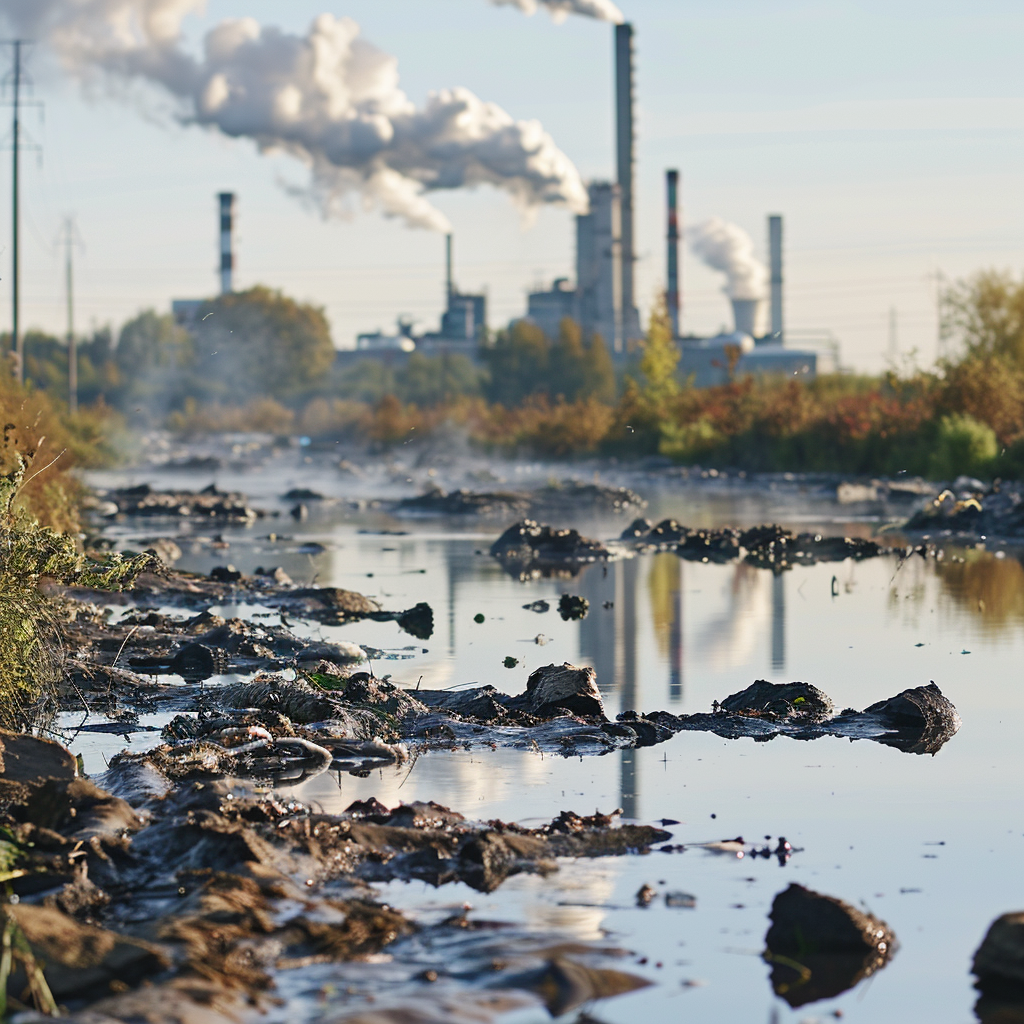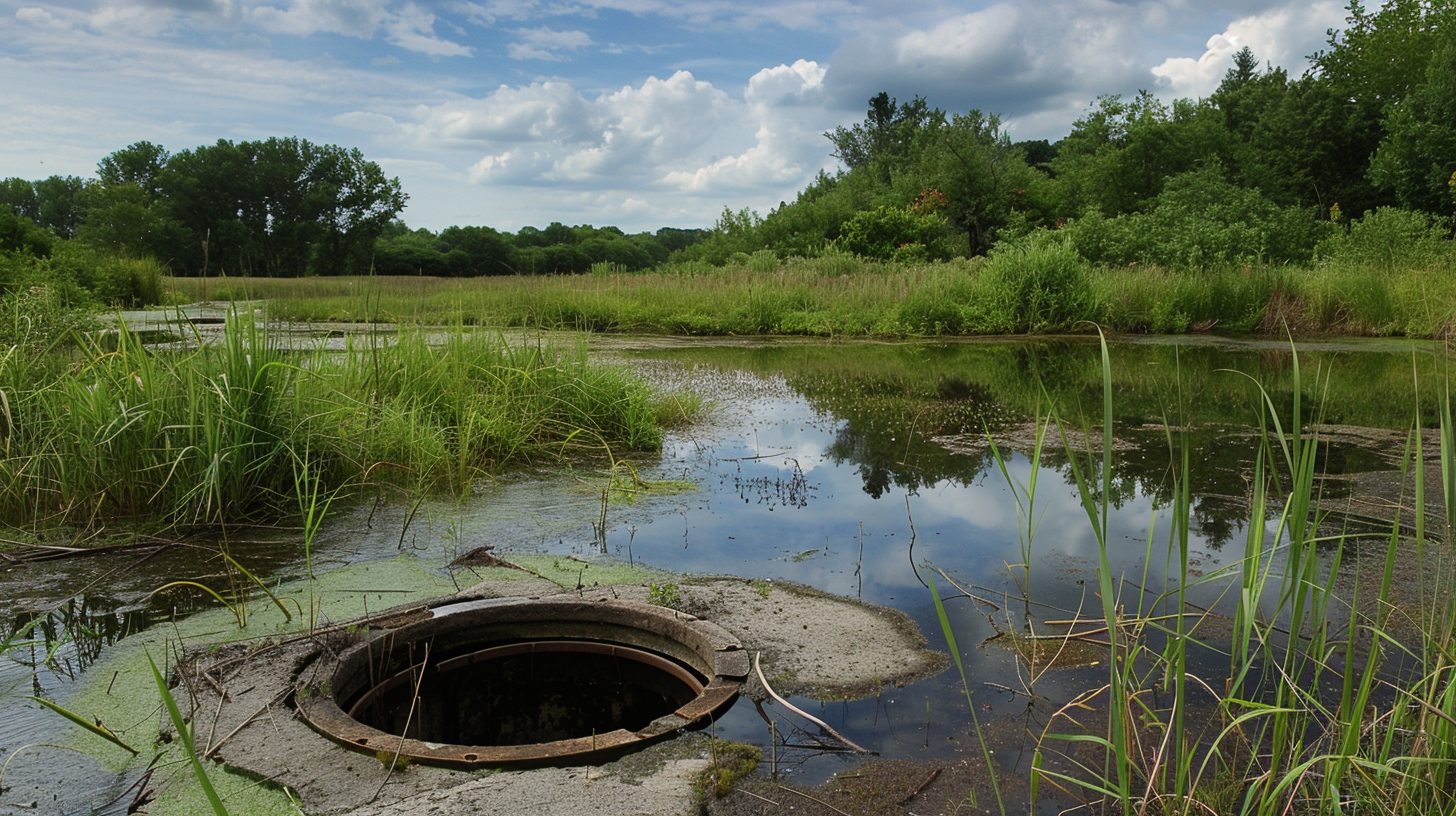Key points
• Environmental Hazards: If you don’t shut down old septic systems the right way, they can pollute the environment. They can leak bad stuff like nitrates and germs into the dirt and water underground, which can be dangerous for people’s health and nature.
• Regulatory Compliance: If you own a property with a septic system that’s not in use anymore, the law usually says you’ve got to follow certain steps to close it off, including getting rid of tanks or filling them up and disconnecting pipes. Sticking to the rules helps stop pollution by mistake and keeps you out of trouble with the law.
• Property Development: Taking care of old septic systems the proper way is super important if you want to build on or change a property safely. Missed or badly closed-off systems can make a mess of building things, fixing up landscapes or handing over the property to someone new.
Contents
- 1 Key points
- 1.1 Definition and Significance
- 1.2 Historical Context and Environmental Impact
- 1.3 1950s Septic Tank Design
- 1.4 1960s Septic Tank Innovations
- 1.5 1970s Shifts in Septic System Design
- 1.6 1980s Septic Tank Development
- 1.7 Old Concrete Septic Tank Lids
- 1.8 Characteristics and Durability Concerns
- 1.9 Role in System Abandonment and Failure
- 2 Environmental Risks of Old Septic Systems
- 3 Economic and Social Implications
- 3.1 Cost of Remediation and Property Devaluation
- 3.2 Legal and Community Challenges
- 3.3 Detection and Assessment Strategies
- 3.4 Identifying and Locating Abandoned Systems
- 3.5 Evaluating Risks and Prioritizing Action
- 3.6 Remediation and Restoration Techniques
- 3.7 Repair, Removal, and Rehabilitation Options
- 3.8 Case Studies and Best Practices
- 4 Policy Recommendations and Regulations
- 5 Stopping People from Abandoning their Property
- 6 Making Maintenance and Decommissioning Worthwhile
- 7 Innovations in Sustainable Waste Management
- 8 Different Ways Instead of Old-School Septic Systems
- 9 Role of Technology and Community Engagement
- 10 Environmental Studies and Regulatory Policies
- 11 Case Studies and Remediation Reports
- 12 Frequently Asked Questions (FAQ)
Definition and Significance
Old septic systems are ones that nobody takes care of or uses anymore. They’re pretty important because they hide risks. When no one looks after these systems, they can drip poisons into the ground and water below, which might mess up our drinking water and hurt the planet.
Historical Context and Environmental Impact
Back in the day, before big sewage plants came along, people living in the countryside used their own septic systems. But when cities grew bigger and government sewage services spread out, many personal systems got left behind. These forgotten tanks could rust or break down, letting untreated sewage get out into the environment. This causes pollution, can mess with local animals and plants, and might expose us to dangerous bugs.
The damage done by these old systems is huge. Harmful stuff slipping into the water cycle can ruin homes for water creatures and cause algae overgrowth that eats away all the oxygen, leaving dead areas in the water where no fish can live. Plus, when groundwater gets dirty, it’s bad news for people and animals drinking from it.
1950s Septic Tank Design
In the 50s, septic tanks had a simple design. Most were made of concrete, clay, or steel. These tanks were how people got rid of wastewater when there weren’t any city treatment centers around.
Materials and Construction Techniques: Tanks built back then didn’t last very long. Concrete would crack, steel would rust, and clay might break.
Common Failures and Environmental Concerns: Tanks often leaked or overflowed due to shoddy building or not being looked after well. This led to dirtied groundwater and environmental danger.
1960s Septic Tank Innovations
In the ‘60s, new and better septic tanks started popping up. These tanks were tougher against leaks, lasted longer and did a better job at not messing up the ground or water.
Advances in Materials and Design: Tank makers started using tougher stuff like fiberglass and plastic. Also, they made designs that cleaned the wastewater better.
Comparative Analysis with Previous Decade: Compared to older tanks, these newer ones were lighter, easier to put in place, and held up better over time.
1970s Shifts in Septic System Design
The ‘70s saw more concern for the environment which led to even fancier designs for septic systems that met stricter rules.
Regulatory Changes and Design Improvements: There were tighter laws that needed cleaner wastewater before it went back into nature. The new designs had special fields for leaking out water so it got treated even more.
Long-term Effects on Sustainability: These design upgrades really helped lower pollution over time and made things more eco-friendly.
1980s Septic Tank Development
The 80s brought tech that made septic systems work better and have less impact on Mother Nature.
Technological Advancements and Efficiency: The updated systems had parts that helped breakdown waste even more, which meant less harm to the planet.
Implications for Abandonment and Remediation: However, with all this fancy new tech, the older models often got left alone without being properly shut down—which risked polluting the place even more. That made it really tough to clean up afterward.
Old Concrete Septic Tank Lids
Elderly systems usually have concrete lids that are pretty sturdy but they don’t stay perfect forever. If not taken care of right, those lids can start cracking or may collapse totally—super dangerous! Bad lids can also let too much rainwater slip into the tank and that’s too much for the system to handle; it’ll break down quicker then.
Characteristics and Durability Concerns
Sure, concrete lids are supposed to last for ages but they still deal with problems from harsh weather and the chemicals that come from sewage itself. Cracking is routine and if there’s steel inside reinforcing the lid it might corrode, leading to further damage. Once broken these lids could let dirty water into what people nearby might drink if we don’t get on top of it ASAP.
Role in System Abandonment and Failure
If you ignore a septic tank lid until it’s no good anymore you might end up making the whole system fail because a damaged lid means waste can escape. Once things get really bad (or cost too much money to fix) people might just ditch their septic systems completely—a move that leaves its mark on both nature and folks’ health.
Environmental Risks of Old Septic Systems

Abandoned septic systems are a big problem for the environment. These unused systems are out of sight but can start leaking nasty stuff into nearby places, which can make both the soil and water dirty.
Dirty Soil and Polluted Water
If nobody takes care of old septic systems, they can break and let bad chemicals flow into the ground. This messes up the soil. Then, it gets worse because those same chemicals can get into underground water, rivers, and lakes. That means our drinking water and places where plants and animals live can get really polluted.
Effects on Nature and Our Health
When toxins hit the environment, it’s bad news for local plants and animals that end up living in toxic places. And it’s not just them; people can get sick too if they touch dirty water or ground. Skin problems or even tummy troubles could happen because of this.
Economic and Social Implications

When septic systems are left unused, it wrecks both the local economy and the community’s way of life. Towns and homeowners, who often don’t have much money to spare, are stuck with the bill for fixing these problems.
Cost of Remediation and Property Devaluation
Cleaning up pollution is expensive. Plus, when there’s broken or ignored septic systems around, property values drop. This scares off people from investing in those places.
Legal and Community Challenges
Fighting over who should clean up the mess can turn into a legal headache. It stirs up trouble among neighbors and puts off important cleaning work. Strict rules and hard-nosed enforcement are needed to sort this out.
Old septic tanks are a quiet threat that could cause serious damage to the environment and our health if we don’t keep an eye on them. Dealing with them means finding them, figuring out how risky they are, and getting rid of the danger properly.
Detection and Assessment Strategies
The first order of business is to find these lost septic systems and see how dangerous they are. Using fancy scanners like GPR and old records helps track them down. Once found, experts figure out how soon they need to act to stop soil or water from getting dirty.
Identifying and Locating Abandoned Systems
Searching for long-gone septic systems is tough but necessary. Old installation records, what people remember, and modern tech like GPS help experts find them. Once found, these spots get marked down for future use.
Evaluating Risks and Prioritizing Action
To understand the risk of old septic tanks, you’ve got to consider things like how close they are to water sources and how many people live nearby. This helps decide which tanks to fix first to avoid harming health or nature. Basically, risks get ranked so the worst cases get handled pronto.
Remediation and Restoration Techniques
Fixing up or yanking out bad septic systems depends on the situation. Sometimes a simple fix is enough; other times you have to dig everything up and put the soil right again. Doing it the proper way stops more pollutants, keeps people healthy, and helps nature heal.
Repair, Removal, and Rehabilitation Options
There’s a whole range of ways to deal with dodgy septic systems, depending on how shot they are. Fixes might mean swapping out parts that aren’t working; removal would be digging up the whole thing and tossing it out. For the land to bounce back, sometimes you’ve got to restart the natural soil activities or even plant native greenery again.
Case Studies and Best Practices
We can learn a lot by looking at times when places have gotten control of these abandoned septic situations. These stories show the smart moves to make, like getting everyone involved, checking things regularly, keeping records up-to-date, and having ready-to-go maintenance schedules. Sharing these winner strategies inspires other spots to try ’em too.
Policy Recommendations and Regulations

We need strong rules and policies to make sure septic systems last a long time. There should be clear instructions on how to take care of them, shut them down when needed, and check on them regularly. It’s important for local governments to work together at the state and federal levels to create a common set of rules. These should cover the basics of how septic systems are designed, put in place, and how they should work. This way, everyone would not just follow the rules but also use the best methods out there.
Stopping People from Abandoning their Property

To stop people from leaving their properties, we need to know why they do it in the first place. Many times, property owners might not realize how important it is to keep things up to date or they might not have enough money to take care of everything. If we start programs that teach them about how crucial it is to look after septic systems, that could help a lot. Also, we could set up programs that give money to owners who can’t afford to maintain or properly shut down their properties. This might make them less likely to just leave them behind.
Making Maintenance and Decommissioning Worthwhile
Owners might be more willing to take care of their stuff if there are perks involved. Things like getting some money back in taxes, paying less for permits, or even getting some cash grants could make people more interested. If they look after their systems well or shut them down the right way, they could get these benefits. This way, looking after things doesn’t seem like such a chore but rather a smart money move.
Innovations in Sustainable Waste Management

Waste management keeps getting better, with new, greener, and smarter ways popping up. It’s wise for governments and groups to put money into finding and using these fresh tech ideas. By doing this, we’re going to end up helping the planet and our wallets over time.
Different Ways Instead of Old-School Septic Systems

Old-style septic systems don’t work well for every neighborhood or place. So, it’s smart to think about other choices like toilets that turn waste into compost or high-tech systems that treat water right where it’s used. These different options usually take up less space and they’re often a more earth-friendly choice in some situations.
Role of Technology and Community Engagement

Technology is stepping up the game in managing septic systems better. With smart sensors and the ability to monitor things from afar, we can get up-to-the-minute info on how systems are doing. This means we can jump on problems right away. Also, getting people involved by hosting workshops, spreading the word on social media, and running outreach projects makes sure everyone knows their role in keeping up with waste management. This team effort stops septic systems from getting messed up because they were ignored.
Environmental Studies and Regulatory Policies

The study of the environment has made clear how much forgotten septic systems harm our ecosystem. This has led to governments making detailed rules for putting in, upkeeping, and shutting down these systems that deal with waste. Yet, even with these steps taken, it’s tough to handle the issues left by old, abandoned septic systems.
Case Studies and Remediation Reports

Many case studies show us the tough problems that come up with abandoned septic systems. These reports are full of good ideas about how to fix these issues, which is really useful for other projects that are trying to solve the same kind of trouble. It’s clear from these papers that fixing up damaged areas can be complex and can cost a pretty penny.
Frequently Asked Questions (FAQ)
What are common indicators of an abandoned septic system?
Clear signs of an abandoned septic system include overgrown vegetation at the tank’s location, unexplained depressions or holes in the ground, lack of maintenance records, absence of noticeable sewer pipes, a disconnected or non-existent link to the house, and possibly the presence of old construction materials like wood, brick, or stone that were part of historical waste systems such as outhouses or cesspools.
How does an abandoned septic tank pose risks to children and livestock?
An abandoned septic tank can be extremely dangerous for children and livestock due to the risk of collapse, creating a sinkhole that might not be visible until it’s too late. The decayed structural elements like rusting metal tanks or crumbling concrete lids can give way under weight, leading to potentially fatal falls. Additionally, harmful gases such as methane trapped in these tanks present a risk of asphyxiation or explosion.
Are there ecological impacts associated with septic tank abandonment?
Certainly, ecological impacts are a serious concern. Abandoned septic tanks can lead to the leaching of untreated human waste into the surrounding soil and groundwater, disrupting local ecosystems. This contamination can spread, affecting plant and animal life, polluting water sources, and contributing to algae blooms that deplete oxygen from bodies of water, threatening aquatic life.
Can septic system remnants affect property value?
Yes, the remnants of an abandoned septic system can have a negative effect on property value. Potential buyers may factor in the cost of remediation or the risk posed by unmapped pollution. Local regulatory compliance issues related to abandoned tanks also make it harder to sell a property, as new owners do not want the liability or expense of addressing these hazards.
What role do county regulations play in mitigating abandoned systems?
County regulations play a vital role by setting safety standards for septic system abandonment, including procedures for proper decommissioning which typically involve cleaning the tank, filling it with inert materials like gravel or sand, and then capping with a concrete slab or dirt pad. These regulations are geared towards protecting public health and the environment from the dangers posed by improperly abandoned systems.
Could advancements in wastewater treatment reduce septic system abandonment?
Advancements in wastewater treatment technologies offer viable alternatives to conventional septic systems. Innovative systems that treat wastewater more efficiently and sustainably could discourage abandonment by providing more convenient, low-maintenance options. These systems also help regulate and reuse wastewater in ways that lessen the impact on the environment.
Why is it challenging to locate some abandoned septic tanks?
Locating abandoned septic tanks can be tricky because original installation documentation may be lost or was never filed properly. Overtime, natural elements like soil movement or landscaping changes can obscure tank lids and access points. Furthermore, old septic tanks may not have been registered or marked with a visible marker like modern systems, making their detection even more difficult.
What measures are taken for safe abandoned septic tank removal?
Safe removal of abandoned septic tanks involves a series of steps including locating the tank, draining any remaining waste water, removing sludge and scum layers, then either collapsing the tank in place or excavating it entirely. The old tank must be handled cautiously to prevent any spread of contaminants or damage to nearby structures like basements or wells.
How does community awareness contribute to handling abandoned septic systems?
Community awareness is essential in promoting proactive septic maintenance practices that can prevent abandonment. Educating homeowners on the importance of regular inspections, pumping schedules, and signs of failing systems fosters community engagement and responsibility. It also helps ensure that issues are addressed before they lead to tank abandonment and environmental damage.
Are there financial aid programs for homeowners struggling with septic system upkeep?
Some counties and municipalities offer financial aid programs or grants to assist homeowners with the cost of septic system maintenance and repairs. These initiatives aim to reduce instances of abandonment due to financial strain by subsidizing necessary services like inspections and pumping, thereby ensuring public health and environmental safety.

I’m Tim Robberts, a seasoned wastewater treatment & septic system expert with over 40 years of experience in the field. My career began as a septic tank installer, and I quickly gained a reputation for my attention to detail and commitment to excellence. Over the years, I’ve honed my skills in designing, installing, and maintaining septic systems for residential and commercial properties.
